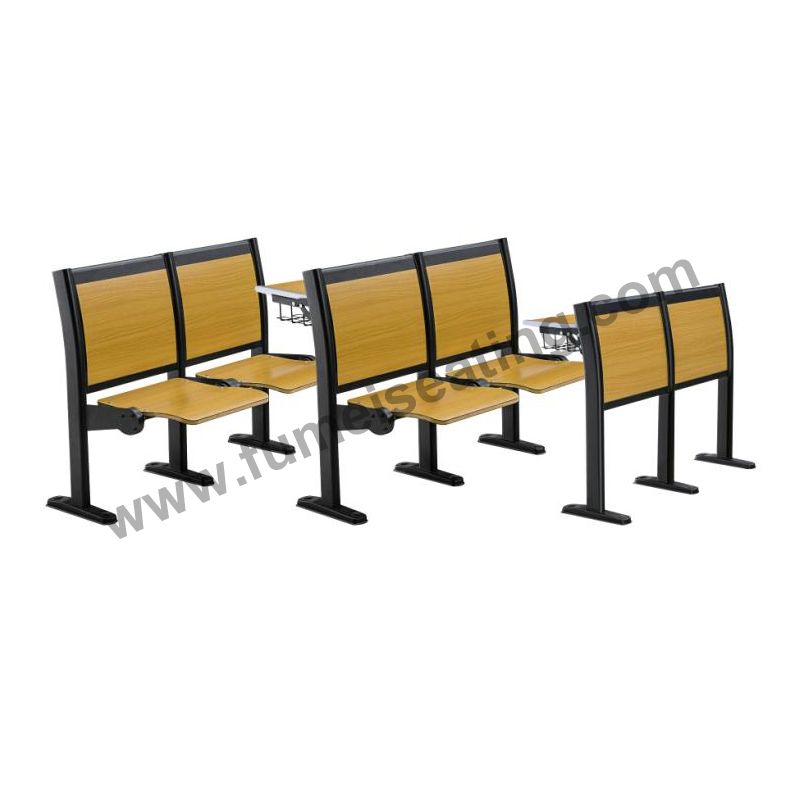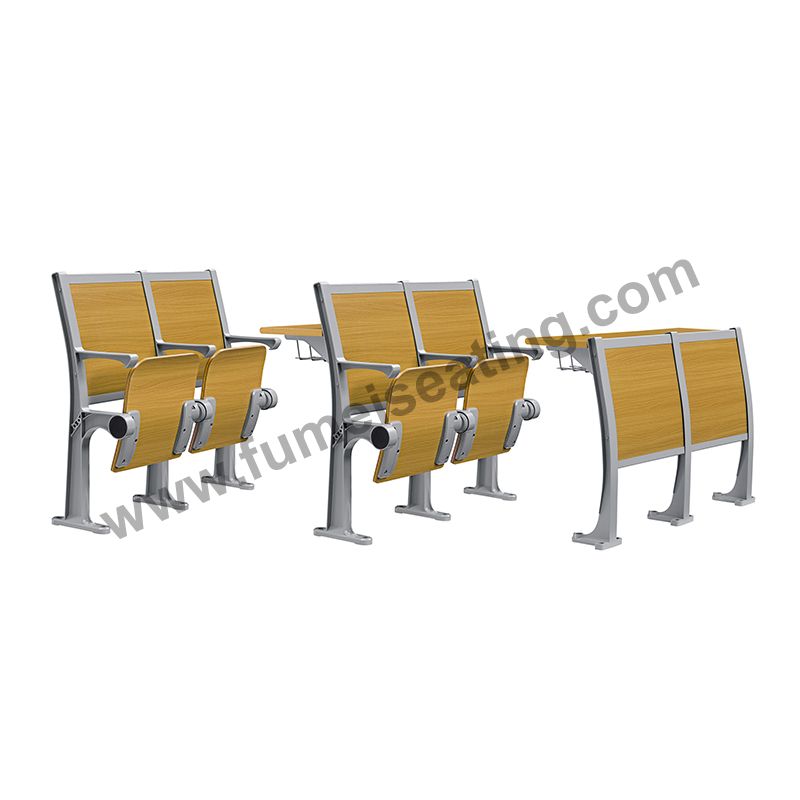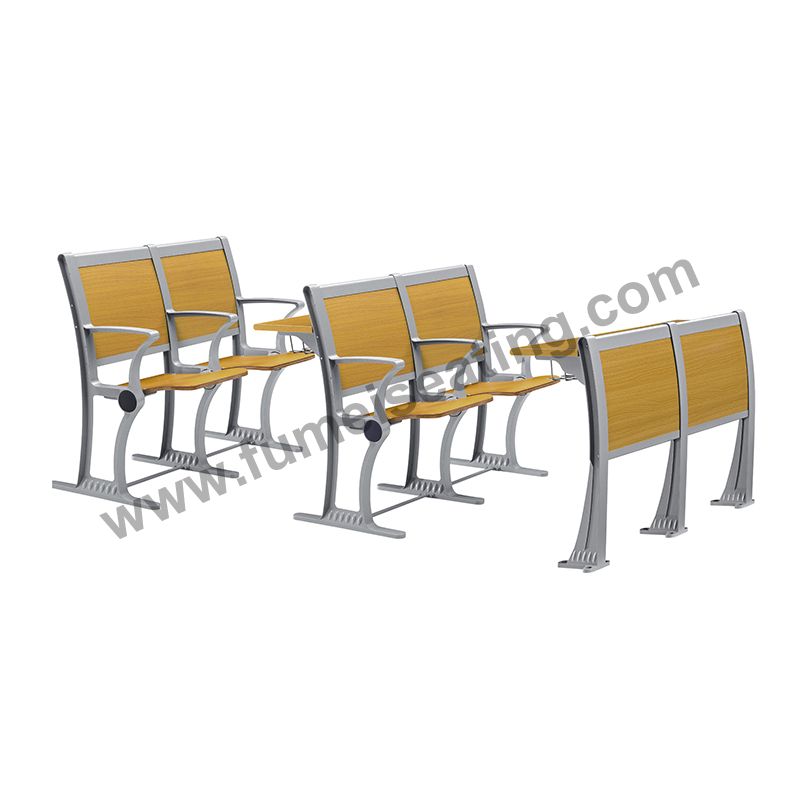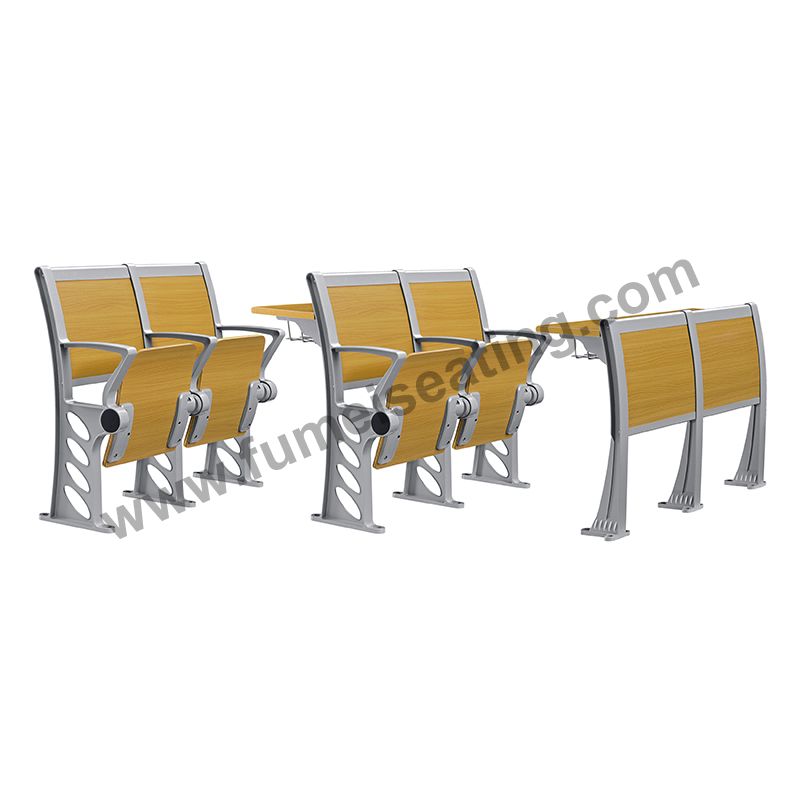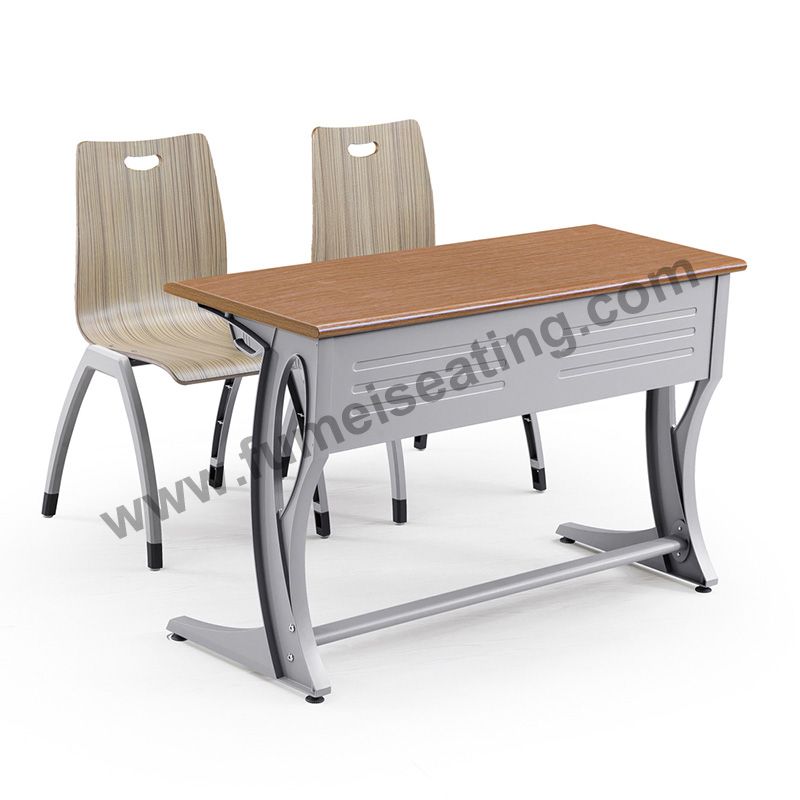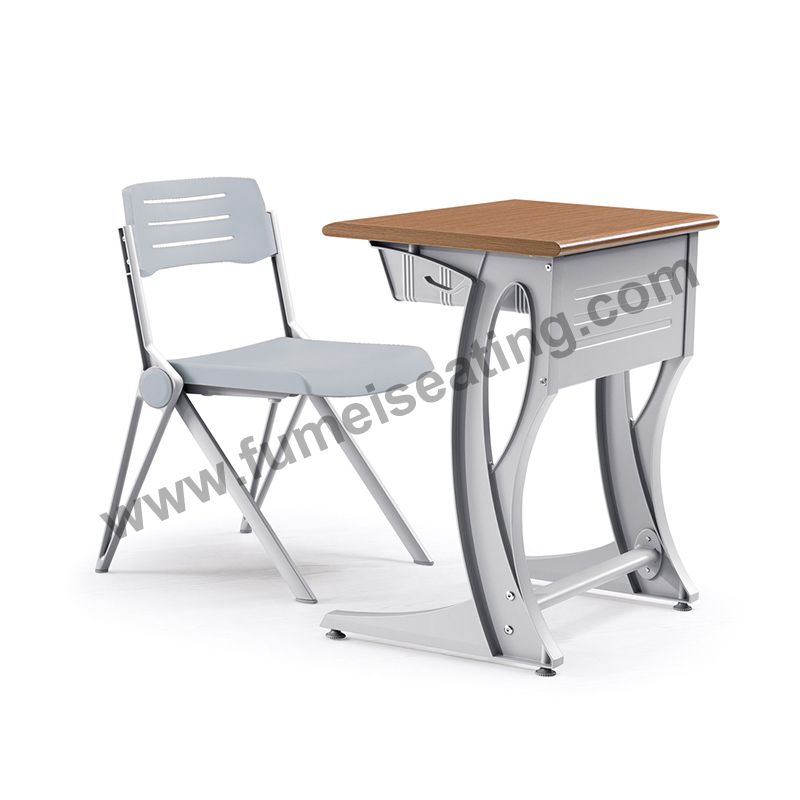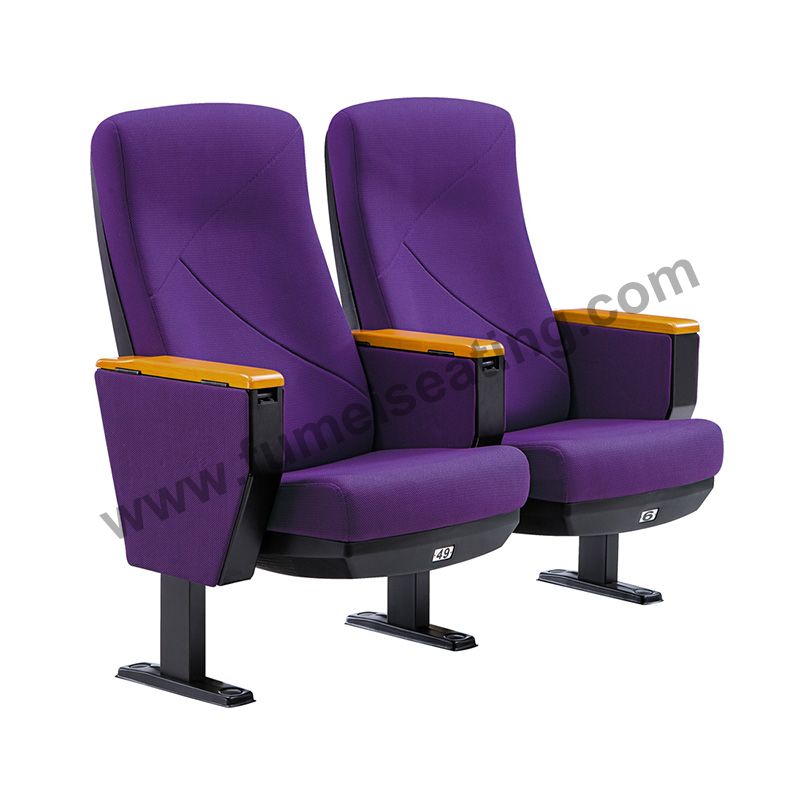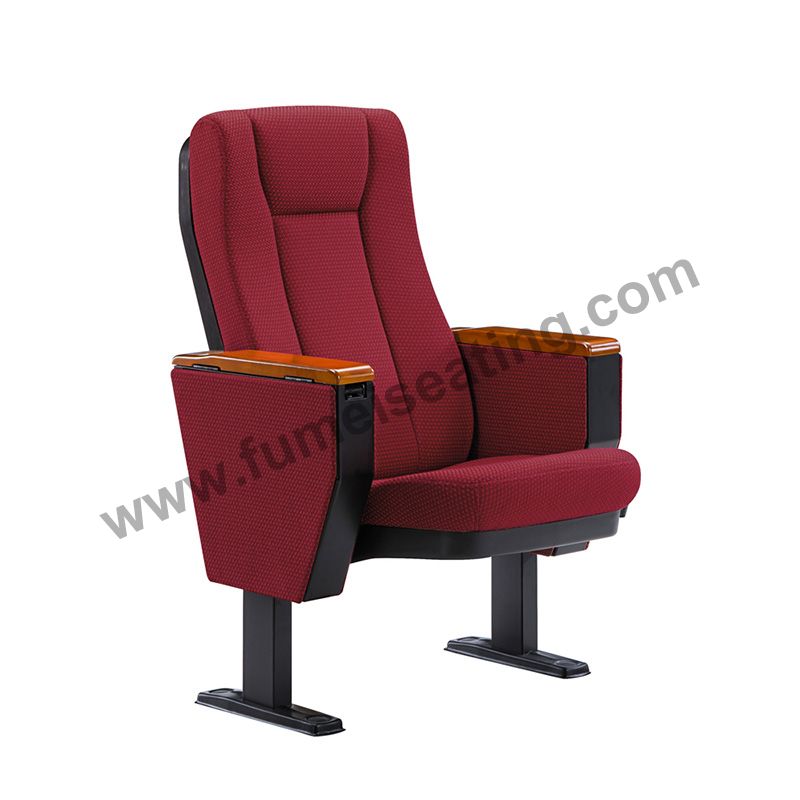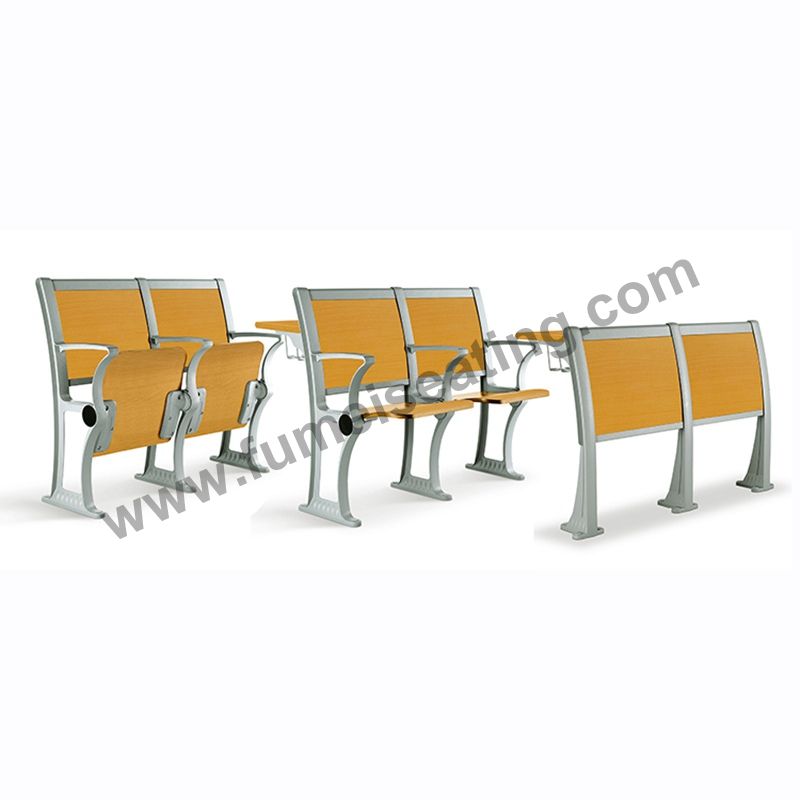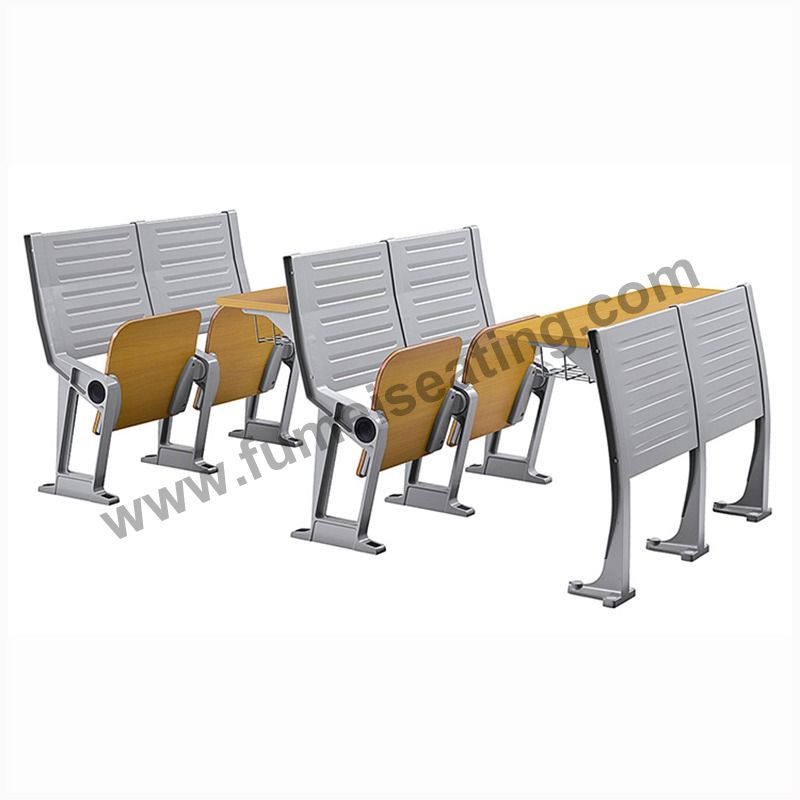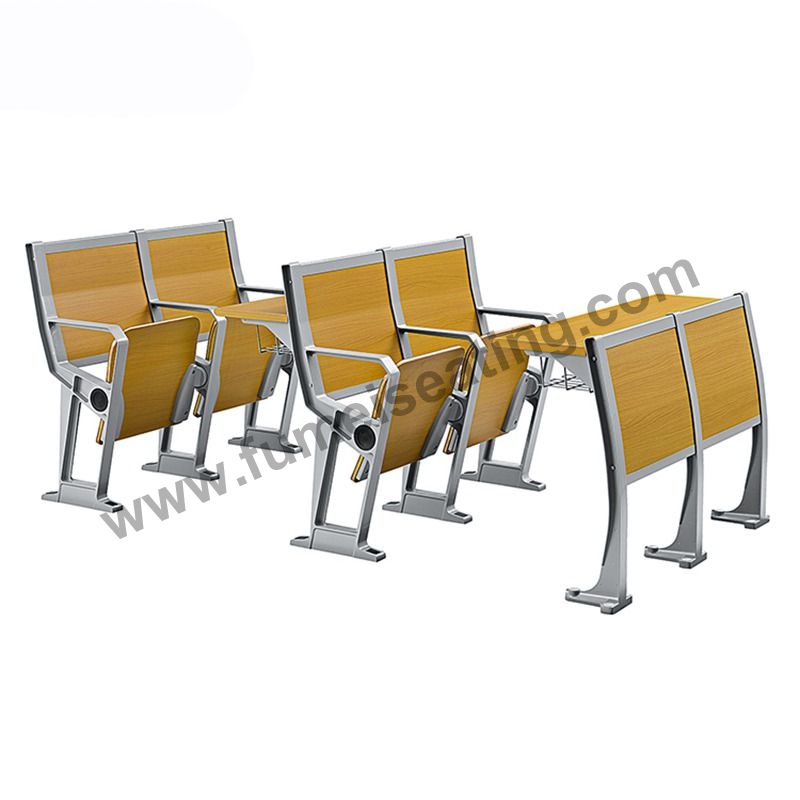- +86 757 2363 2953
- info@fumeiseating.com
We always work as a tangible team to ensure that we can provide you with the best quality and the best price for Church Pew Chairs,Interlocking Church Chairs,Padded Church Chairs,Purple Church Chairs,Church Folding Chairs.Our final goal is "To try the best, To be the Best". Please feel free to contact with us if you have any requirements. The product will supply to all over the world, such asPuerto Rico ,Kenya ,Mozambique ,Leicester ,Montreal ,We take measure at any expense to achieve essentially the most up-to-date equipment and approaches. The packing of nominated brand is our a further distinguishing feature. The items to assure years of trouble-free service has attracted a great deal customers. The solutions are obtainable in improved designs and richer assortment, they're created scientifically of purely raw supplies. It readily available in a variety of designs and specifications for your selection. The most recent kinds are a great deal better than the preceding one particular and they are quite popular with lots of prospects.
After more than three years, the renovation of Fairfield Hall has not yet been completed
The Croydon Council failed to conduct any form of competitive tendering process before allowing the rookie developer to take charge of the £30 million renovation project of Fairfield Halls brick by brick.
confirmed.
According to former senior staff working in the former conference hall, this cruel mistake has caused taxpayers of municipal councils to pay nearly twice the original budget, and may even endanger the future of the 60-year-old art venue. In the short term, it will reopen this year.
In June 2016, a decision was made at a cabinet meeting of the Parliament to monitor the overdue renovation of the hall – only one year after the Labour Party established the brickwork as a housing developer. At that time, brick by brick did not even build a garden shed, it was okay to supervise a complex multi-million pound project to modernize and upgrade one of the most valuable assets of the City Hall.
All council contracts, especially contracts worth millions of pounds, should go through a strict competitive bidding process. The £30 million renovation project has never been regarded as a stupid thing by the Labour government. Last month, after a series of wrong decisions and wasted “investments”, they were forced to declare that they were actually bankrupt. The heart of many people.
Only after a 14-month campaign on this website to seek direct freedom of information request, the council accepted the application: "Please provide all reports and letters related to the competitive bidding process for the designated renovation contractor Fairfield Hall".
The FoI request was submitted on October 30, 2019. Soon after the budget was overrun and the refurbished lobby was reopened, a series of reports from the lobby staff and customers confirmed the unsatisfactory nature of the building brick by brick. s work.
Sadiq Khan was shown to the lobby by Alison Butler and Tony Newman in 2017-a year ago, they handed over a £30 million renovation to the rookies Developer Brick by Brick
The committee was deadlocked and delayed or even violated the law, and provided (intentionally?) misleading and incorrect responses ("We were unable to provide reports and letters related to the competitive bidding process", they said in the November 2019 record) It was not until three days before Christmas that they officially admitted that this project, worth 30 million pounds, had never conducted any competitive bidding.
The rationale behind the brick-by-tile transaction is that they will oversee the renovation of the lobby and ultimately pay all the costs from the profits they will build on the hundreds of apartments around the site. Chris Buss recently described this complex property transaction as an “interesting transaction” and Chris Buss was appointed to investigate the operation of Brick by Brick.
Fairfield Halls "darkened" in June 2016 to allow builders to perform work on site that would have taken only two years. As a result, no major on-site construction began within 12 months, because the person in charge expressed surprise and shock that asbestos should be contained in the structure of the art center built in the 1950s-although at least three broad asbestos scopes were defined on the building report. Prior to Fairfield Halls by the council.
During the course of the project, the two largest contractors employed by Brick by Brick either resigned or disputed millions of pounds in fees.
Appeared this year
Costs worth more than £9 million.
Although contract disputes are not uncommon in large-scale construction projects, two such important and reputable service providers should express their dissatisfaction. This must be due to the lack of experience and qualifications of Brick by Brick and its senior management in this situation The reflections include the "chief executive" and former board director Colm Lacey.
If "one brick, one tile" is not qualified for this job, how does the Croydon Council hand it over to novice developers?
Last week, the Croydon Council finally made an explanation.
Their letter of intent responded: "The 2016 original cabinet document established the background of the decision under point 3.16. We are not a participant in the competitive bidding process, nor are we a party to any contract for the renovation of the hall signed by Brick by Brick, but it does They were granted permission to carry out construction because this is still our asset."
Simon Hall: Simon Hall: In his plan, the profit from the apartment was used for renovation and increased the vault of the City Hall. However, the brick by brick building failed
The Cabinet Report was prepared by the then Assistant Chief Executive Richard Simpson (Richard Simpson), whose responsibilities were shared by Alison Butler, a member of the Cabinet Housing Committee, and Simon Hall, who was in charge of the district’s finances. (Simon Hall) Shared responsibility.
Hall resigned, Butler was fired earlier this year due to the financial collapse of the council, and most of the blame for City Hall’s problems was due to Brick’s failure to repay any interest, failure to repay any loans or any profits after repayment Operating for nearly six years.
In the 2016 Cabinet Report, it was almost an afterthought that it was a short practice to delegate this important responsibility brick by brick. For Butler and Hall, their focus is clearly on the possibility of real estate speculation in building apartments around College Green near Fairfield Hall.
The preamble reads: “The recommendations made in this report maximize the use of the assets of the City Hall to build new houses...”, adding that the plan will “enable an innovative business model that will enable the municipal The government will benefit financially and help achieve savings goals" and "ensure improved community facilities."
Few bystanders: the brick by brick apartment building at College Green will not inspire people
Today, more than four years later, bricks and bricks have not yet begun construction work on the residential part of the plan. This is another costly failure-April 2020,
.
The second version of their proposal is only necessary, because as the relationship between the committee and the college of continuing education becomes increasingly fierce, Brick by Brick cannot guarantee the purchase of key parts of the website from Croydon College.
In the 2016 cabinet document, Simpson’s report stated under the heading “University Green Development”: “University green development has always been the subject of previous cabinet reports, including a £30 million investment in Fairfield Halls, which is a 200,000 square feet of new university/university building and approximately 2,000 new residential units as well as new public realm, retail and leisure space.
"The application for the mixed plan was submitted in February 2016, and the planning committee will review it in July/August 2016.
The report submitted to the Cabinet in June 2016 was almost after the fact that the £30 million project was handed over to Brick by Brick, and there was definitely no tender process.
"According to other locations suitable for immediate development of the entire town, it is recommended to use a brick-by-brick structure to propose those elements of a university green plan in which the council holds land rights and/or options.
"This will include at least the first phase (refurbishment of Fairfield Hall, initial residential development, enabling engineering of university facilities and some public domain projects) and phase two (delivery of new university buildings, reconstruction of existing buildings, university land And other public domain works).
"The process will involve the transfer of land rights in the relevant parts of the site block by block in accordance with the terms set out in Part B of the report. A £30 million package of improvement projects will be completed brick by brick and approved.
The report has been agreed, because all documents submitted to the Cabinet are always the same.
Lacey and Bricks and Bricks will show complete contempt for the board’s review process by convening an annual committee meeting (usually with Butler’s support) to come up with a "business plan" that strips off all its financial details so that It is impossible for elected members to do their jobs.
Colm Lacey: Shows total contempt for the board’s review committee
Starting from the summer of 2016, at the Fairfield Auditorium, which is in charge of brick by brick, the construction site was quickly postponed due to asbestos or poor project management. Costs began to rise, and several elements of modernization work were silently cancelled. These elements were previously considered to be the “necessary” conditions for bringing the auditorium into the 21st century.
Part of the funds for the project were transferred to other places. This is why Fairfield Halls is now an art center without an art gallery.
. The grant was approved by the Capor2Coast board meeting attending the meeting. It was Tony Newman, leader of the Croydon Council at the time, Mark Watson (then a member of the Council of Parliament), and a An introduction session that included Parliamentary officials Stephen Tate and Colm Lacey.
In this bidding, £3 million of the total grant was earmarked for the creation of
Gallery space in the lobby underground parking lot.
That gallery was never built.
According to the council, they “signed a revised agreement with C2C regarding the grant of grants in April 2018. As the agreement was revised, the council agreed not to spend £3 million in C2C payments on the gallery, and It is the reallocation of funds to other elements of the plan."
The art gallery is one of several important aspects of the renovation, the purpose of which is to save money, and sources in Fairfield Halls worry that this will endanger the renovation and cause the venue to no longer be suitable for use.
There has never been an activity to improve the stage entrance of the concert hall, which is an integral part of the project's goal, with the aim of making bigger and more modern performances once again in Croydon.
In September 2019, the venue even reopened without replacing the dilapidated seats in the Ashcroft Theater and Concert Hall Auditorium. Since the venue opened in November 1962, the venue has been supporting Croydon art lovers.
Due to poor management of the council and brick by brick, did the sun finally fall on Fairfield Hall?
Before the renovation started, the 60-year-old artist’s entrance elevator had been discontinued and was accused of being unsafe and expected to be replaced. Except for four years after starting work in the Fairfield Halls building, the old, condemned elevator still exists, without any modern replacement.
Due to the coronavirus, Fairfield Music Hall was forced to close in March and there have been no public performances since. The venue manager BHLive recently received a £2.5 million grant from the Arts Council to reopen the halls, but they declined to explain the situation.
Due to poor construction work, some of their former employees doubted whether this was possible.
"There are many places that are not completed and incomplete," a senior staff member who was recently removed from the lobby told
"With the artist's entrance elevator being condemned, I can't see how they can realistically reopen the concert hall because you can't expect to drag musical instruments and equipment onto the stage of the stairs.
"The entire site has unfinished construction projects and thorny issues. The staff area at the back of the house is very embarrassing, which is a real safety hazard.
"All these things should be handled by the project manager, but never. To complete some important improvements, such as getting into the stage, it may cost millions of dollars. Now after they go bankrupt, the money is unlikely to come from the council."
Thanks to the help of Newman, Hall and Butler, Croydon-an art center without art galleries-will become London's "cultural borough" in 2023.
Croydon is so ridiculous. We have been promised too much, and very little left. The contractor does not have a bidding procedure, and the operator does not have any procedures, because all well-known companies have withdrawn and only BH Live is left to win bonuses. Now, there is an unfinished building left in the hands of the leisure center operators, and these operators have exceeded their depth. The venue has never had a chance. It is no wonder that a few months after the reopening, senior staff began to issue notices. The Croydon Council has many unanswered questions to answer;
– Why did BH Live get the contract? – Release their bid offer
– Since the award of the contract, how much has the Croydon Committee paid to BH Live?
-Who authorizes overspending?
– Where will the funds be transferred to BH Live for payment and "good" repairs?
– Is the resident company still paying rent (if how much)?
Will the Croydon Council see greater transparency in 2021? Will it turn a new page? In order to rebuild trust in the entire cultural community, we need these answers to move on.
David, please be patient. Our excavation work has revealed important answers to several of your questions and will be reported soon.
You may hope that those comments above will find the answer. let us see.
With such reports (and many other excellent examples of investigative journalism from Inside Croydon), you must wonder whether Whitehall would think that Croydon Council cannot fix it. Could it be based on the breakup of Northampton County Council?
I read this article with interest, which raised an interesting question: "The EU passed legislation to ensure that the public procurement market is open and competitive, and that suppliers are treated equally and fairly. These rules cover things like contract advertising. , The procedures for evaluating company certificates, awarding contracts and remedial measures (fines) in case of violation of these rules."
As far as I know, during my tenure in the local government, I have dealt with some competitive bidding processes, but I remember that the only exception to this process is only for defense or security contracts. All contract tenders are reviewed by members and senior officials. It looks like someone is crushed by pants (Croydon Council)
It is possible that some members of the assembly, "managing" and supervising the BXB's behavior during the establishment, is equivalent to public officials' misconduct or misconduct?
I will bow to Croydon's wealth of knowledge of the process (and lack of proper process) that led to this regrettable situation inside Croydon, but I will comment on the building I see today.
Any commissioned client who knows the butt from the elbow will ensure that the bidding architect can show direct and relevant knowledge of: (I) Dedicated to regional art architecture (ll) and the historic existing structure of the 1950s/60s (lll) Work together to transform the auditorium building into a contemporary regional art center.
Newman and his cabinet did not conduct any of these inspections, but stupidly and lazily handed over the entire commission to BrickxBrick's internal team of architects, who were completely unable to prove the prerequisites usually required for projects like this. Newman represented the Croydon Council as a client and screwed it up.
The interior decoration of the building looks like part of the TV renovation plan. When you first enter the building, the lack of sensitivity to existing buildings is obvious. The choice of materials, the insensitivity of color choices, and the lack of understanding of existing buildings all highlight the lack of experience of the architects involved. They painted the existing white handrails with white household paint at the reception at night! -Absolutely cruel, it is a decision to devalue existing buildings. The failure to refurbish the seats in the main auditorium was another blind decision that did not receive sufficient budget priority.
And it has nothing to do with budget-London has at least 10 architectural practices with a certain degree of experience and design capabilities, and these practices may make Fairfield Halls a landmark in our town.
There is another component that can truly transform the building from a concert hall venue into a proper art center, including an important public gallery/exhibition space.
Tony Newman was able to provide this gallery exhibition space during the renovation process and was completely messed up-this is his complete lack of vision and leadership.
The interior decoration work is basically a refurbishment work, mainly to clean up the common parts and restore the building to the 1960s style when it was opened.
But like Fisher's Folly and the New Addington Leisure Centre, the final total cost of the project is many times higher than the original.
The committee could have built a new art center, but the original budget was 60 million pounds.
So, like the £150 million of the Tory parliamentary committee that Newman failed to investigate, where did the money go?
The sad state of this place sounds like something from Laurel and Hardy's movies. Apparently, the Steinway piano at Fairfield Halls has cancelled AWOL, making it a useless place for the orchestra-great! Admittedly, I prefer heavy metal fans, but still so.
There are two Steinway. At least one was purchased through a public subscription. Both disappeared when they were closed (there is a rumor that they had been sold to a minor public school).
BHLive entered into a supply transaction with a piano manufacturer of an unknown brand, but returned all instruments in the summer to avoid rent (as disclosed exclusively by iC)
This is indeed cruel. Sorry
The Mavericks put forward the main points about purchasing. In my career, I have also spent a lot of time dealing with public construction contracts, including the purchase of a £200 million Tramlink. If the Fairfield Halls works purchased by BxB are not public institutions, they may not be subject to EU regulations. However, if the Croydon Commission is the client of the contract and BxB is only the agent, then I think there may be a violation of EU regulations. Competitive bidding can prove its value and reduce the risk of "transactions". Considering the overspending, I would like to know what kind of contract to sign and how to share the various cost risks.
Given that I must strictly require public funds to be spent on construction projects, I find the condition of Fairfield Hall depressing and betraying the public that the Council should serve.
I think that taking a gentle "transaction" route is to not let anyone stand out, but a means to provide freedom and flexibility to very weak, selfless clients and inexperienced design teams. It failed.
Either way, the residents and enterprises in this borough are huge harm.
Sounds like it might be a police matter? ? Violating laws and regulations, embezzling funds, and losing public assets. The addresses of Butler and Newman. Must be famous for the arrest warrant!
I am waiting for four things to happen.
The first is the rest of the Croydon Commission, when its procurement and bidding policies and procedures are very clear but ignored in this case, investigating how this happened.
The second reason is that the Croydon Conservative Party hypocritically spoke out about the scandal and ignored their party’s behavior in the government by signing multi-million pound contracts with friends and donors.
Croydon Labour ranked third and eventually kicked Newman, Hall and Butler out of the party. Unless Hamida Ali and others think this is okay.
Finally, let the police wake up and notice the obvious corruption and start an investigation.
In view of all these recent wrongdoings of the Security Council, does Sadiq Khan (Sadiq Khan) have anything to say about the situation in Croydon? I remember seeing his photos when Fairfield reopened and in various iC stories.
You might ask the Labour MP in the town
Oh, the MPs accidentally "ignore" everything... "Wrong?"... "Monitoring"... To me it was like a scam
Does the closure of the Art Gallery/College plan mean that the Fairfield parking lot can cancel boarding and become a parking lot again? Or we still look forward to a place that can accommodate 2500 people (1800 concert halls and 700 theaters), can park only 100 cars, to tick the ideological box and build a moneyless parliamentary vanity project...
An excellent survey! When my choir was singing in the venue soon after it reopened, it would help me understand what I saw-shoddy decoration, dust everywhere, and choir seats in a dangerous state. I think this is the result of trying to meet its latest reopening date, but now I realize that this is a local phenomenon of the entire project.
If you get rid of Borough Architects, Borough Engineers, and Contract Compliance Department, and rely on administrators, then it seems that you usually get messed up in Fairfield Halls and Croydon. When replacing the Fairfield Halls boiler in 1993, I served as an electrical engineer on the committee and provided design advice. All work is tendered and there is no overspending.
Enter your email address to subscribe to this blog and receive notifications of new posts via email.
Join 17,479 other subscribers
News, opinions and analysis about the people of Croydon, their lives and political times, these people are in the most populous and most populated borough of London. Headquartered in Croydon (Croydon), edited by Steven Downes. To contact us, please email inside.croydon@btinternet.com
The material may not be published, broadcast, adapted or redistributed. ©2021 FOX News Network Co., Ltd. all rights reserved. Quotes are displayed in real time or delayed by at least 15 minutes. Market data provided
. Supported and implemented by
.
. Mutual fund and ETF data provided
.
Fox News Flash headlines are here. See what you click on Foxnews.com.
The Gran Teatre del Liceu Opera House reopened on Monday and held its first concert since the Paris Theatre.
Lock-in-no need to worry about the social distance of the audience.
The UceLi Quartet replaced I Crisantemi (Chrysanthemum) by Giacomo Puccini, replacing 2292 plants, one for each seat in the theater. The concert was also broadcast live for people to watch.
On Monday, June 22, 2020, musicians rehearse at Gran Teatre del Liceu in Barcelona, Spain. The GranTeatre del Liceu will reopen. By then, the 2292 seats of the auditorium will be occupied by plants. The UceLi Quartet String Quartet will be broadcast live online on June 22, when the UceLi Quartet String Quartet will bring Puccini's "Crisantemi" to the green public, which is brought in from the local nursery. (AP Photo/Emilio Morenatti)
The event was conceived by Spanish artist Eugenio Ampudia, who said he was inspired by nature during the pandemic.
"I hear more birds singing. And the plants in my garden and outside grow faster. And, without a doubt, I think maybe now I can establish a very close connection between man and nature." He said before the show.
At the end of the eight-minute concert, the sound of leaves and branches blowing in the wind resonated with applause.
On Monday, June 22, 2020, musicians rehearse at Gran Teatre del Liceu in Barcelona, Spain. The GranTeatre del Liceu will reopen. By then, the 2292 seats of the auditorium will be occupied by plants. (AP Photo/Emilio Morenatti)
The theater says it will donate plants to local health workers to thank you for your efforts during the pandemic. After three months of movement and assembly restrictions, Spain lifted the national emergency.
Get all the stories you need to get the most powerful name from the news delivered to your inbox every morning
Subscribed
You have successfully subscribed to this newsletter!
The material may not be published, broadcast, adapted or redistributed. ©2021 FOX News Network Co., Ltd. all rights reserved. Quotes are displayed in real time or delayed by at least 15 minutes. Market data provided
.
Boxoffice Pro
Scroll Magazine
box office
The experimental revolution that swept through the 1960s and 1970s was almost dead, buried in the 1980s. Summarizing the new decade, Peter Biskind
Wrote: "Before the Ronald Reagan tsunami swept through everything, the market replaced Mao Zedong,
Beat
, And supply-side economics replaced the power of the people. "The corporatization of Reagan America and the return to conservatism made Hollywood not interested in small, realistic, director-led films. Instead, it was all incorporated into megabuck films produced by large companies and displayed in the form of blockbuster films.
Ride the wind and waves
with
In the past ten years, Hollywood in the 1980s turned all its energy to producing expensive science fiction, action and horror movies, such as
what
It has taught this industry not only the power of expensive special effects, but also the power of large-scale marketing activities. The soaring marketing budget greatly encouraged movie prices in the 1980s. MPAA President Jack Valenti revealed in November 1980 that in that year, the average film produced by the major film companies that make up the MPAA cost $10 million in advertisements and prints, which was a 1975 figure. Twice. Prints and advertising increased by another $6 million. According to Valenti, a film studio needs to reach a box office of $40 million in order to break even.
In order to ensure the greatest return, Hollywood high-concept blockbusters are becoming more and more homogeneous. Unlike the popularity of lesser-known actors and even non-actors in the 60s and 70s, film studios increasingly rely on a handful of very popular actors whose star factor is enough to make people appear in the box office.
It even started publishing a list of "box office attractiveness" based on monthly surveys, which included the most popular stars and the most promising new actors. The studio also invested heavily in the sequel to minimize risks. Associate editor Jimmy Summers (Jimmy Summers) was quite ironic about the trend of the summer of 1983, when
,
with
Hit the screen. He wrote: "The summer of the sequel seems to be the season when the actors do exactly what the public wants them to do."
Higher production and sales costs proved to be a problem for exhibitors, who were sometimes forced to increase ticket prices to $6 or $7, which was twice the price in the 1970s. Between 1979 and 1980, the average ticket price was $2.69, and the MPAA reported that the average ticket price increased by 6.9%. Exhibitors found themselves stuck between higher printing costs, greater studio profits, and worry about losing customers.
Editor Alexander Auerbach took over from the magazine’s founder Ben Shlyen in 1979. He urged the entire industry to control costs and pointed out the studio’s hypocrisy in an editorial published in June 1982. . How do they recommend that a movie priced below US$10 million be used for online distribution at a price of US$3 million or less? "He wants to know.
Financial changes in the 1980s made it increasingly difficult for small studios and exhibitors to survive. Instead, vertically integrated media groups have the ability to fund and distribute films for these films, thus ushering in the era of large corporate entertainment. The acquisition of studios by non-media groups began in the 1960s, but the 1980s was an era of unprecedented cross-ownership of media, vertical integration, and deregulation of financial instruments such as equity, shareholder value and other financial assets in an unprecedented period.
In 1982, Coca-Cola, the theater’s long-term partner, acquired Columbia Pictures for $750 million and entered the industry. This is the first time a large conglomerate has acquired a major Hollywood studio in Hollywood since Kinney National Services acquired Warner Bros. (Warner Bros.). SevenArts, Gulf & Western acquired Paramount, and Transamerica took control of UA in the late 1960s. In 1983, Colombia, HBO and CBS joined forces to create Tri-Star (later known as TriStar), a new studio that will produce movies for theater exhibitions and cable television. A year later, the three-star company acquired the Loews theater chain, raising antitrust concerns about potential violations of the Paramount Act. In 1987, the Japanese electronics giant Sony entered the drama distribution market to create AIP Distribution to increase its video sales. Two years later, in September 1989, the American company Sony acquired Columbia Pictures and Tri-Star from Coca-Cola and renamed them Sony Pictures Entertainment.
Sony’s acquisition opened the way for foreign studio ownership and increased US concerns about "foreign invasion." The Australian Qintex Group acquired MGM/UA as early as 1989, surpassing the bid of Australian publisher Rupert Murdoch, who acquired a 50% stake in 20th Century Fox in 1985. It is now the only company that controls movie content, distribution channels, and the hardware (VCR, laser disc, etc.) that people watch movies at home.
Despite the most important laws, the exhibition has not been able to shake off the trend of mergers and acquisitions. Sony owns a long-established chain of Loews (Loews), which was renamed Sony Cinemas before changing back to its original name. Warner Communications and Gulf and Western Corporation established the Cineamerica Theatre, a corporate entity that took over the Gulf and Western Corporation’s Mann Theater, Festival Enterprise and Trans-Lux tours. Eventually, Universal’s parent company MCA purchased 49% of Cineplex Odeon in 1986.
Although most acquisitions are not the subject of reviews by the editorial team,
The new editor Harley W. Lond (who took over in 1984 and underwent major reforms to focus more on "important analysis and interpretation" rather than direct news), expressed this trend regret. He wrote in an editorial in August 1989: “The cluster fever in our industry has now shifted from acquiring exhibition shops to acquiring production shops. This does not bode well for us. Just recently, George Lucas ( George Lucas) complained about such indiscretionary corporate takeover actions, saying that such actions “damage the creativity of the entertainment industry” by establishing heavily indebted companies, thus occupying resources that should be used for new film adventures, filmmakers and new filmmakers. idea."
The survival of small independent theaters struggling to survive is threatened.
Specially make a lot of space for independent distributors and exhibitors, and regularly publish strategic columns and information on distributors and cinemas. Some independent developers have successfully developed, the most famous is New Line Cinema
And Miramax
As well as exhibitors such as Carmike Cinema, Pacific Theater and Laemmle Chain Store. But as Dan Hudgens, president of the Harkins Theater in Arizona, said in December 1987, independents are still "faced with extinction" due to the acquisition of corporate groups. Independent exhibitors are at the forefront of anti-integration and often promote solutions through NATO. In fact,
According to reports, in August 1987, Dan Harkins and other exhibitors from Texas and Indiana appeared before the New York District Court to prevent three-star companies from booking their films to Loews Cinemas. right. Despite all efforts, the court approved the three-star company's request.
Vertical concentration was not the only challenge facing the exhibition industry in the 1980s. In March 1981, editor Alexander Auerbach summarized the threat of home entertainment. "Exhibitions and studios used to worry about the emergence of television, but now they are thinking about the impact of cable TV, pay TV, video discs and video tapes, direct broadcasting from satellites to homes, and other technological advances. He said: "All these new devices can be watched. Operation is an opportunity or a threat, but in either case, it cannot be ignored. "Since the advent of television in the 1950s, cinemas have been competing for the scarce time, attention and money of moviegoers, and now there are seemingly endless home substitute bounties.
A major threat to home entertainment is the rapid improvement in the quality of home TV screens and surround systems. As readers of this column may remember, in response to the large format competition of the 1950s, Tony Francis, President of International Drama Products
The contributor, lamented in May 1981 that "pictures only provide size". He worried that although the quality of TV images is not as good as movies, they will soon surpass movies. Francis urged exhibitors to prepare for the competition and reminded readers that in 1981, only 15% of American theaters provided stereo sound, and consumers are increasingly liking this kind of sound. Therefore, people want to use the radio at home, Voice recorder, and headphones. In September of that year, Ioan Allen, vice president of marketing at Dolby, warned
Compared with home appliances, as many as 90% of theaters are inferior in terms of sound and/or projection. The innovation of HDTV technology makes the threat even more imminent. Interestingly, Francis Ford Coppola's Zoetrope Studios actually participated in the HDTV demonstration because he believed that the next logic was to distribute the tape movie on the satellite to the theater.
The video tape boom is another challenge for exhibitors, especially after the mid-1980s. Sony's Betamax and JVC's VHS were launched in the US market in the 1970s, and they occupy the leading position in the cassette and video cassette recorder industry in fierce competition.
In 1985, the Consumer Electronics Group of the American Electronics Industry Association released a study that showed that VCR sales increased by more than 72% year-on-year. Prior to this, the Supreme Court issued a Sony Betamax judgment in March 1984, which ruled that the practice of home video tape does not violate copyright law. Took unprecedented steps
Since 1985, through its "Boxoffice Video Supplement", its coverage has been expanded to video, so that exhibitors can understand the trend and potential uses of this new format. Soon, the sales of cassette tapes and VCRs surpassed the domestic box office. According to the report of the 1987 video tape supplement, the sales revenue of video cassettes increased by 30% compared with 1986, reaching 7.46 billion U.S. dollars, almost twice the total box office of 4.2 billion U.S. dollars in the same year.
In addition to improving the quality of home entertainment and the power of VCRs, the 1980s also witnessed the explosive growth of cable television. It is no coincidence that all major media and exhibiting corporate groups are scrambling to acquire premium channels. For example, in 1983, MCA, Paramount, and Warner agreed to become partners to purchase Movie Channel, a satellite-delivered movie pay-TV service that had more than 2 million subscribers at the time. Four years later, the late National Entertainment Company owner Sumner Redstone (Sumner Redstone) ran 400 movie centers and thus had a controlling stake in Viacom, which owns MTV and Showtime . For exhibitors, the danger is not just a brutal competition for the audience. As Perry Lowe, Chairman of the Board of Directors of the National Franchisees Association, explained in an article published in 1981, due to inflation and different industry cost structures, “theatre owners raise prices faster than cable TV operators must be fast, and the result will be a wider gap between the value of watching movies at home on cable TV and going to the cinema."
Overall, exhibitors’ response to these new threats is not as anxious as they have been in the past few decades. Despite countless doom and failure predictions in the past, the exhibition still survived. A lot this time
Writers and copywriters quickly pointed out how the auxiliary market can incentivize film production and bring new opportunities for return. Jack Valenti pointed out in 1982 that although about 40% of TV households are equipped with cable TV, 18 million have subscribed to pay TV or cable movie channels, and 4 million video recorders are operating in the country. In the living room, this year is still the highest record ever. -High box office record. He believes that the reason behind it is simple: people who love movies like them in every medium.
Industry experts reassure exhibitors by highlighting the positive promotional opportunities offered by pay TV and cable TV. One such example is "Movieweek", which is a one-and-a-half hour program on the MSN Information Channel, using a model similar to MTV to bring movie marketing (including trailers and interviews) to thousands of homes. Video is also used as a medium to attract viewers who don't watch movies at all. Dan Harkins explained in October 1985: "Home video tape is actually a blessing to exhibitors because it is used by people who are not involved in Hollywood film production." A businessman went further in an article in 1981: "[Exhibitors have the knowledge that there is no other merchant group in the country. They know the movies and how to sell them. Therefore, they are the most prepared to become video tape and CD retailers. A good team.” Auerbach agreed in an editorial in 1984, “The rental business is a bit different from the usual snack bar activities, but it is hardly a huge challenge for the theater staff.” In fact, the magazine. Some of the small theaters introduced, such as the Fred Kesbill Theater in Ogallara, Nebraska, or the Country Theater in Knoxville, Iowa, have turned to video sales.
Exhibitors are also concerned about the theater's exclusive rights window. The discussion about windows can be traced back to the birth of television, but the 1980s was the decade when the issue was more common in the magazine’s coverage. The editing line is clear. In November 1980, Auerbach wrote after New Orleans held an informal NATO convention on this subject: “The exhibition must fight to maintain its status as the first sales channel for Hollywood products.” Auerbach paid special attention. The shrinking window between theater releases and cassette tape releases, noting that some videotapes were released while the movie was still showing in theaters. This applies not only to smaller movies, but also to larger box offices
, Can be used on tape six months after the first release.
"What has the unwritten rule of the one-year period for the transfer from film to video tape (now six months on the surface, but four months or less in reality) become?" asked the editor Harley in December 1984 W. Lund (Harley W. Lond). He pointed out that the issuer has benefited from word of mouth about theatrical distribution and is eager to further shorten the window. The theater that followed was the hardest hit. Auerbach wrote in May 1984, "A reasonable "window" between theaters and tape distribution can at least help the first theaters, although the theaters where small films are shown are still very hard to beat." George Kerasotes, President of Kerasotes Theatres Agreeing with this, he announced in 1981: "I don’t think there will be any more theaters in the future, because nearby theaters will show pictures for a long time, because the market is rapidly being absorbed through cable crews, cassette tapes, disks, whatever Something appears."
In the above editorial, Harley W. Lond urged exhibitors to unite and put pressure on their suppliers, while also increasing investment in advanced technology to provide "a kind of unmatched Entertainment methods". He emphasized the widespread criticism of the exhibition industry. Although all novel technical threats have been found in the home video market, for some exhibitors, the biggest threat is the exhibitor itself. The report said: "The well-maintained theater, with poor acoustics, dim screens, untidy decorations, and harsh patterns are discouraging potential ticket buyers than any electronic miracle on the market today."
After the NATO meeting in Las Vegas in 1981. The diversified model of shopping centers has begun to appear boring and outdated. In 1989, executive editor Tom Matthews wrote: "Compact, efficient, and usually lacking personal style movie theaters have become Japanese cars in Japanese movie theaters."
The movie needs to bring back magic. Jack Valenti simply pointed out in 1986: "The theater's box office is inseparable from the magic of movies on the market. One goes down, and the other goes down. One goes up, the other shines." A new type of theater Can bring back the magic: giant theater. After the mid-1980s, huge modern theater complexes began to replace smaller theaters. In 1988, Brussels Kinepolis opened the world's first huge theater with 25 screens in Belgium.
The path to a complex era is detailed in the following documents
. Without the Canadian cinema Odeon Group and its president and founder Garth Drabinsky, history cannot be said. Drabinsky and Nathan A. Taylor founded Cineplex Odeon in 1979. According to the magazine's latest exhibition giant list, by the end of this decade, it has become the fourth largest cinema in North America, with more than 1,500 screens in the United States and Canada. Large complexes are usually located in shopping malls and are surrounded by the 1,000-seat Cineplex Beverly Center in Los Angeles, but the new trend of independent buildings with multiple amenities is becoming more and more common. For example, Cineplex Odeon's flagship store in Universal Studios is adjacent to Universal Studios and its theme parks. It was built in 1987, has 18 screens and 6,000 seats, and is priced at $16.5 million. In a speech at the NATO meeting in 1988, Draginski emphasized the basic principles behind this huge complex. He emphasized that "there is an urgent need to develop the most vivid movie viewing environment that current technology and the most creative architectural design will allow."
The large theater is designed to provide a luxurious experience for moviegoers. They are often inspired by the old movie palaces, and the visionary architects of those classic theaters, such as Samuel "Rosie" Rotherfield, Thomas Lamb, and the Rapp family, are often used in large buildings. Mentioned. Dan Harkins wrote in 1987: "Lobby and auditoriums are more inclined to use magnificent furnishings than the previous shopping mall biscuit box floor plans." This mentality may explain why so many pages.
The outline of the film palace dedicated to restoration in the 1980s. Large buildings are also designed to optimize customer viewing and comfort, which means that Dolby stereo surround sound system and Lucasfilm THX sound system are essential. To help exhibitors navigate countless innovations and new terms, the magazine's "Modern Theater" section has expanded its coverage of sound at a speed comparable to when sound was first introduced in the 1920s.
The whole idea behind large theaters and the struggle with home entertainment is to make movies an "experience". Franchising has become an integral part of this strategy, as many theaters have expanded their menus to provide more specialty franchises, such as beer and wine, and larger (32-ounce sodas are much smaller than 45 and 60-ounce cups). ) And combos. Commodity matching began to flourish. of
The success of licensing and merchandise sales made exhibitors eager to try, and many companies began to sell licensed T-shirts, posters, records, video tapes, toys and other utensils at franchised booths. Exhibitors hope to increase profits and turn the "buzz" of satisfied movie audiences into impulse purchases after the film ends. This is especially true for children's movies. As one exhibitor said in 1988, "We sold a lot
Nailed to our theater. But we try to commodity
But no luck. "Inspired by the fast food industry, the Coca-Cola Company acquired Columbia Pictures in 1982. It was a pioneer in this strategy and set up multiple promotional combinations on reusable cups and popcorn buckets. "The heat for screen development. The more attributes, the better the effect. Every year, all the publicity and hype on just one hot picture puts the theater industry in a painful dilemma," said Herbert Arnold, vice president of Coca-Cola America, in an interview in 1980.
In 1989, Coca-Cola launched a self-service walking commissary booth made by Cretors, the inventor of the popcorn machine. Coca-Cola will be one of the most important developments in the exhibition industry: automation. Although articles about automation occasionally
Since the 1950s, modern automation technology as we know it today began to emerge in the 1980s. "Ticket vending machines are nothing romantic. (...) But automation has reached the box office, and theaters that are not modernized will be damaged." Auerbach warned in June 1981. In order to help exhibitors understand the new technical tools available, we introduced a special section "Computers" in the modern theater section of the 1980s, discussing computer-related benefits, usage, costs and products.
Automatic ticketing systems, such as Omniterm, Dataticket and Movie/Master, are often advertised and explained in magazines. For exhibitors, the ability to print tickets faster and provide all necessary information to moviegoers on ticketing, while also tracking sales, is a huge innovation for exhibitors. These systems also allow customers to book tickets over the phone in advance and pay with major credit cards. More and more software products (such as Theatron All in One) are integrated with franchise sales, programming, bookkeeping and even booth and auditorium management.
The 1980s also saw the development of an online database designed to manage distribution and marketing materials. Two database services analyzed in it
It is Baseline (access to weekend box office reports and information about upcoming movies), and Cinemascore (which can provide demographic data about night open audiences). In December 1988, the magazine decided to extend its service to the digital space through Boxoffice OnLine. This computer service was designed to provide exhibitors with important information (such as trailers, trailers and change release dates) faster than the print version. Is faster.
Computers have also become an important part of the systematic use of data to understand consumer behavior and tastes. A contributor summarized the need for more research on the motivations of movie fans to watch movies in such a fragmented media environment. "Today's moviegoers don't go
Movie they go
"Movies", he wrote, forecasting and data are more necessary than ever. Software such as entertainment data and market relay systems have been developed to predict which movies will be shown, thereby helping exhibitors guide the schedule. September 1989 According to Tom Matthews, the editor-in-chief of the month, film studios and exhibitors have more funds than ever before, "The film industry has become a digital game. "
By the end of this century, the industry is optimistic. At the NATO/Southwest Exhibition in 1989, NATO Chairman William Kartozian pointed out that both screens and revenue showed a 20-year upward trend. The former increased from 13,000 to 24,000, an increase of 80%. The increase in annual income from 1.2 billion US dollars to 4.4 billion US dollars, an increase of 27%. In this case, from IP-based active films to experienced films, vertical integration and automation, the trend adopted in the 1980s has become the cornerstone of the industry in the following decades.
Share this post
Although Warner Bros. might abandon theatrical exclusivity in the film released in 2021, they did not abandon the theater. Next year, the publisher's title will be on the streaming platform HBO Max... debut on both the big screen and the small screen.
Universal, Warner Bros., and Disney are among the major studios that released the most movies in theaters during the Covid-19 pandemic, and this position is likely to remain until 2021 Year and 2022. This is due to the unprecedented transaction of Universal Pictures. .
The name "Jacobs" may not have a name, but the retractable seat system has become one of many family businesses that promote the development of the exhibition industry. Having been married for 43 years, Fred and Denise Jacobs have gone through multiple industries together and entered...
During the week from December 25th to January 1st, the cinema will show many films. This is a guide for watching movies while continuing to watch the big screen holiday tradition with the family during this holiday.
According to AMC, if you miss the opportunity to watch a movie on the big screen, you can wait less than a month.
Such as
, The theater chain announced that it will reopen 450 of its 600 locations on July 15. Surprisingly, there is no need to wear a mask to watch movies, and AMC has taken many measures to ensure that it keeps its distance from society and keeps its customers and employees safe.
At each venue that reopens next month, the audience capacity will be reduced, and there is usually no 30% of seats for each screening. In an auditorium with traditional seating, AMC blocks every other row. For those with AMC special seats, visitors are required to leave a space between them and others.
AMC plans to implement disinfection of "public areas and high touch points" multiple times a day. The extra time allocated between movie screenings is used to thoroughly clean the auditorium. "Now electrostatic disinfection sprayers and vacuum cleaners with HEPA filters will be used throughout the building. In addition, HVAC filters have been upgraded to MERV13 as far as possible."
A new sign will be used to remind everyone to comply with social distancing standards, and the menu has been temporarily simplified. You can still buy AMC Perfectly popcorn, Coca-Cola Freestyle drinks and "other classic movie snacks", but "in order to reduce exposure, large popcorn and slobber beverage refills are currently not available. For example, napkins, lids, straws and condiments Upon request."
AMC is asking visitors to help by washing their hands consistently, using the hand sanitizer provided frequently, choosing cashless transactions, maintaining social distancing and wearing PPE when PPE is available. Of course, if you have any symptoms of COVID-19, please choose to self-quarantine and delay your visit. However, AMC does want you to watch the movie again because
.






























Copyright © Guangdong Fumei Furniture Industrial Co., Ltd. All Rights Reserved. | Sitemap | Technical Support: 
![]()
Links:

